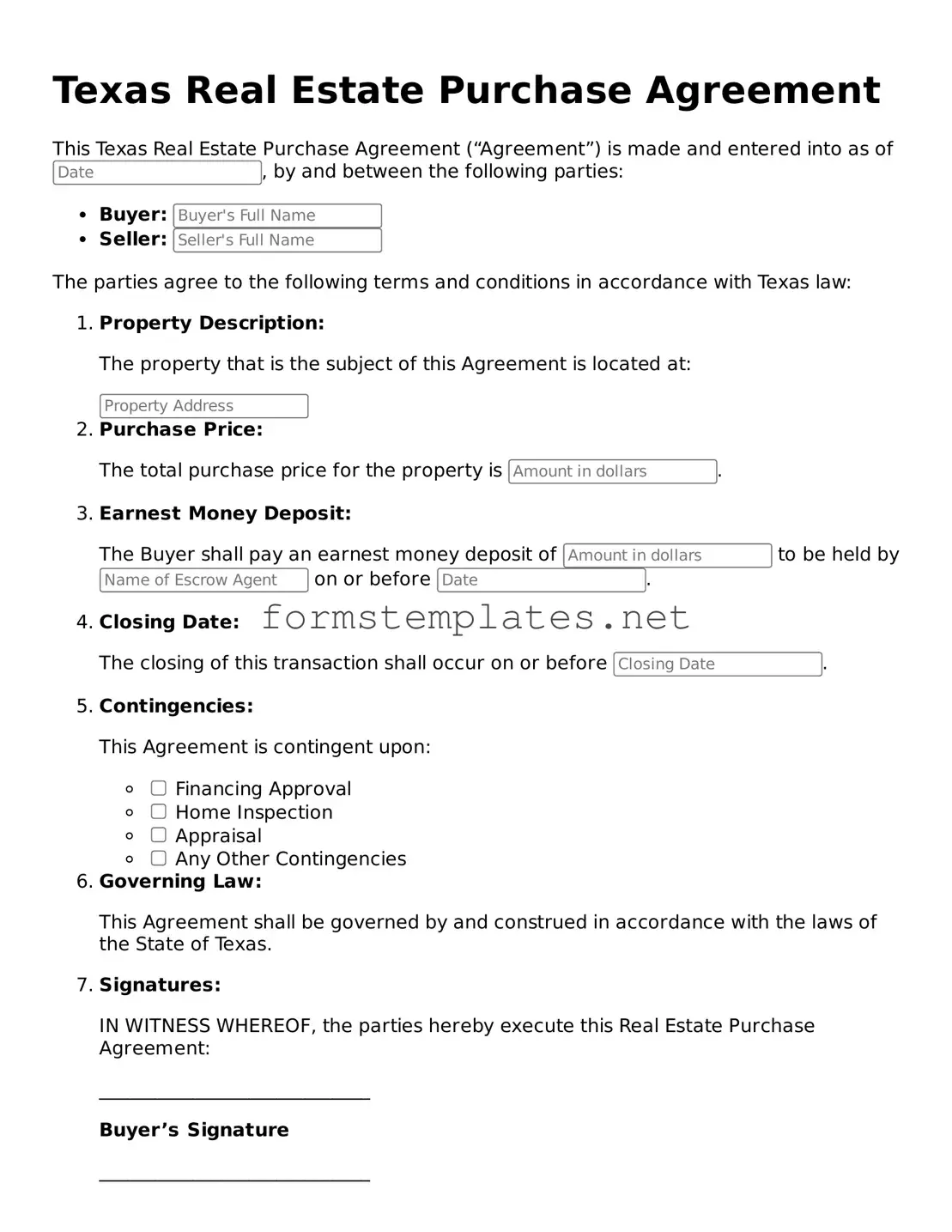Attorney-Approved Texas Real Estate Purchase Agreement Template
The Texas Real Estate Purchase Agreement is a legally binding document that outlines the terms and conditions of a property sale in Texas. This form serves as a critical tool for buyers and sellers, ensuring that both parties understand their rights and obligations. By clearly defining the details of the transaction, the agreement helps facilitate a smooth and transparent real estate process.
Open Editor Now
